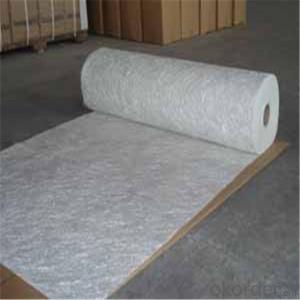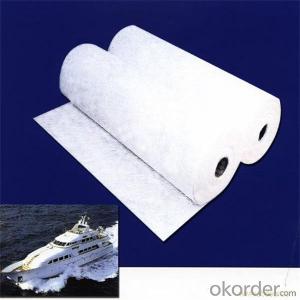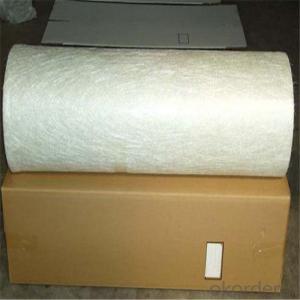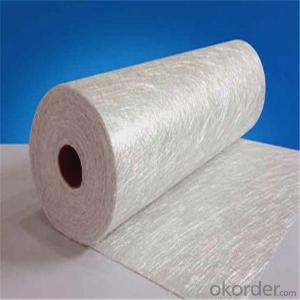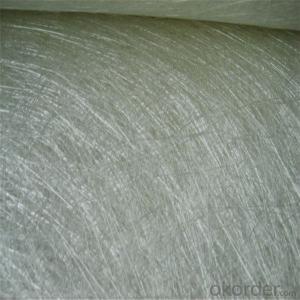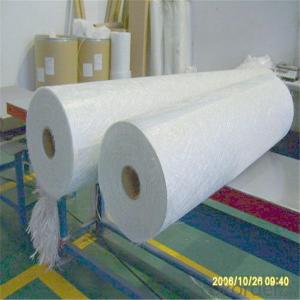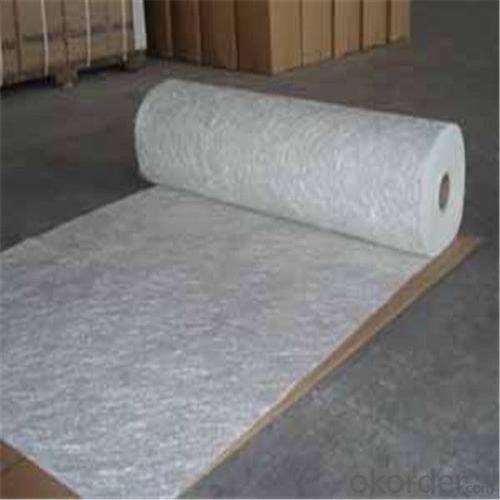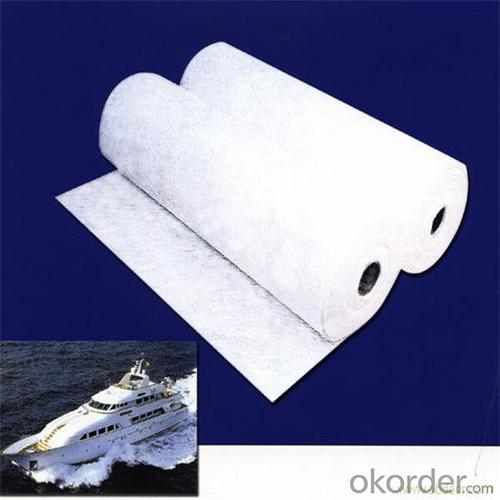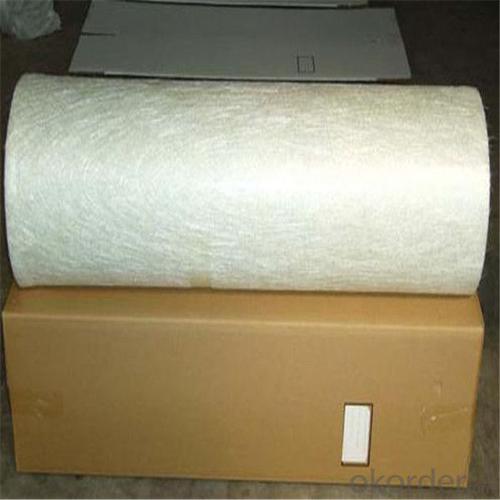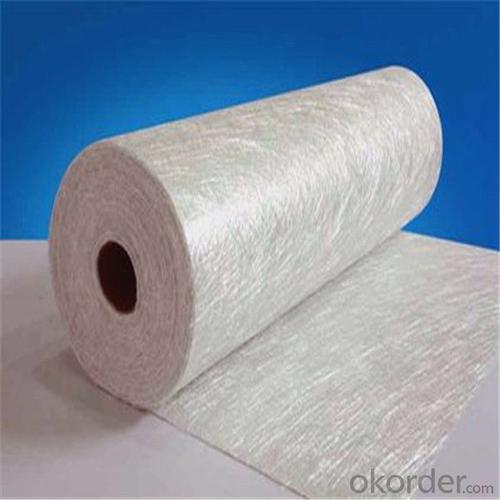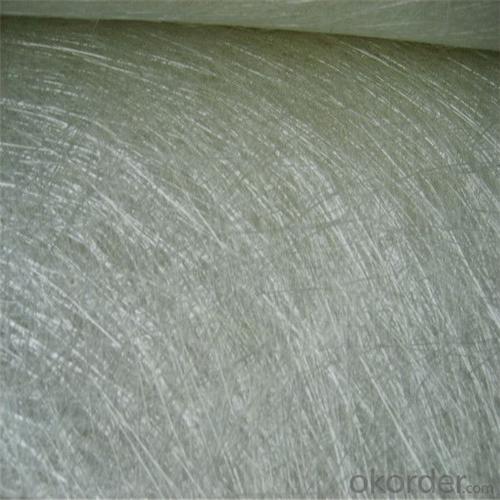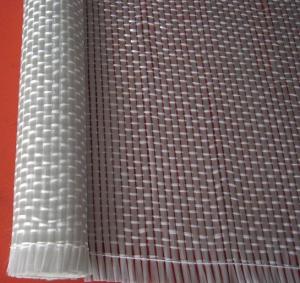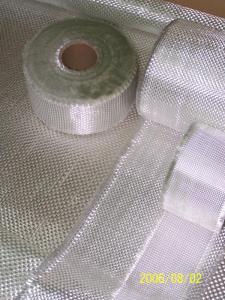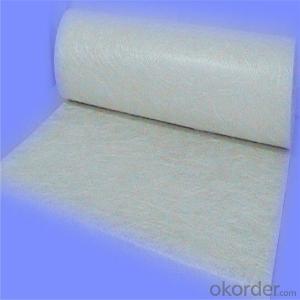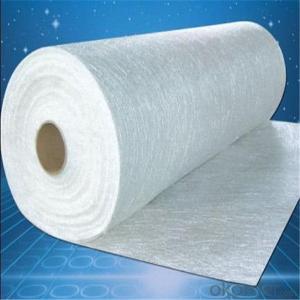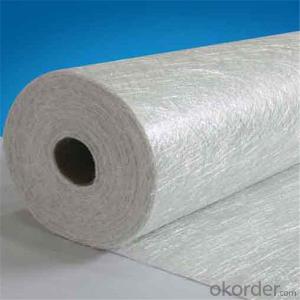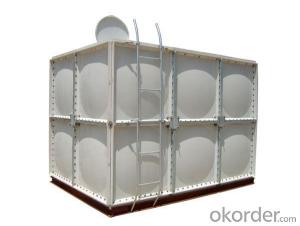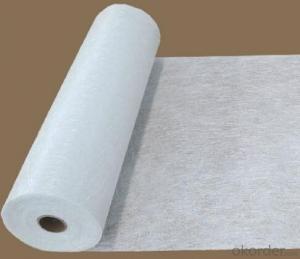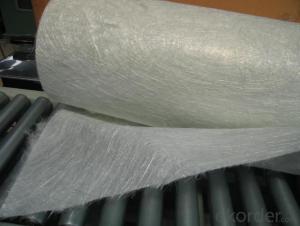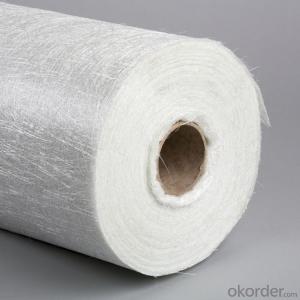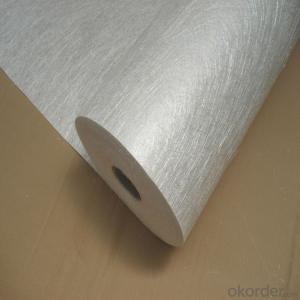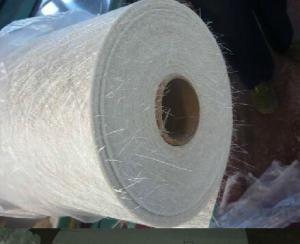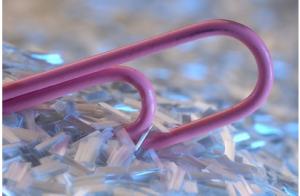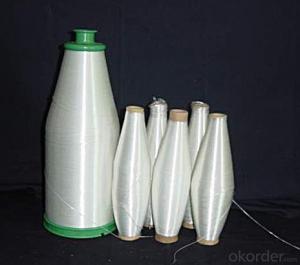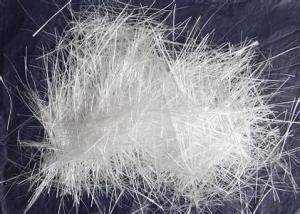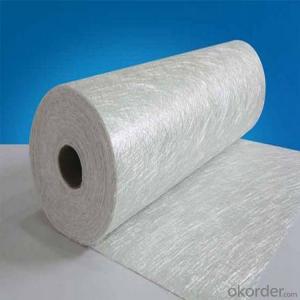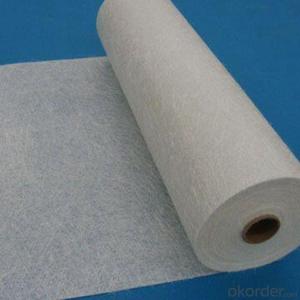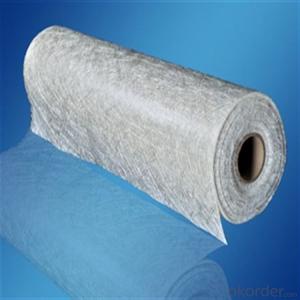Fiberglass Chopped Strand Mat Machine for 2024 1040mm Chopped Strand Mat
- Loading Port:
- Tianjin
- Payment Terms:
- TT OR LC
- Min Order Qty:
- 100 m.t.
- Supply Capability:
- 20000 m.t./month
OKorder Service Pledge
Quality Product, Order Online Tracking, Timely Delivery
OKorder Financial Service
Credit Rating, Credit Services, Credit Purchasing
You Might Also Like
Quick Details
| Technique: | Chopped Strand Fiberglass Mat (CSM) | Dimensions: | 450gsm | Mat Type: | Continuous Filament Mat |
| Fiberglass Type: | E-Glass | Softness: | softness | Place of Origin: | Jiangxi, China (Mainland) |
| Brand Name: | cnbm | Model Number: | 450gsm | color: | white |
| fiberglass type: | E glass | product: | e-glass powder chopped stand mats | binder: | powder or emulsion |
| width: | 1040 or 1270mm, as your requirement | weight: | 30 or 45kg/roll | paper tube diameter: | 90mm |
| outer diameter of roll: | 256mm | packing: | plastic film+carton box + pallet |
Packaging & Delivery
| Packaging Details: | plastic film+carton box + pallet |
| Delivery Detail: | 15-20days |
Specifications
1.e-glass powder chopped stand mats
2.binder:power or emulsion
3.width:1040mm or 1270mm
4.weight:450gsm
Picture
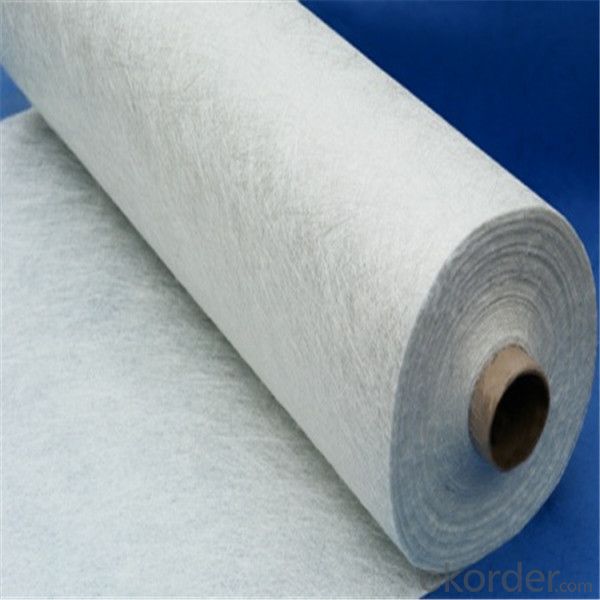
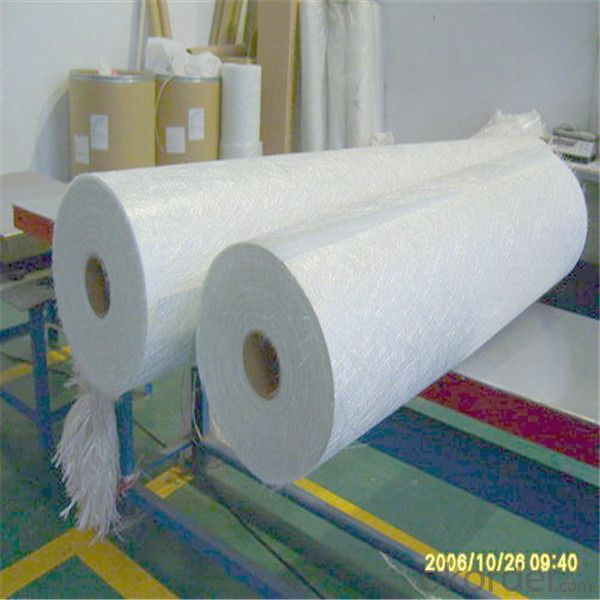
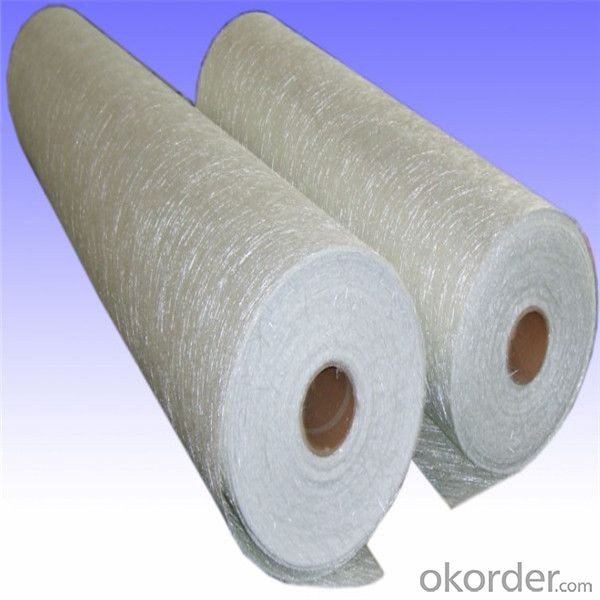
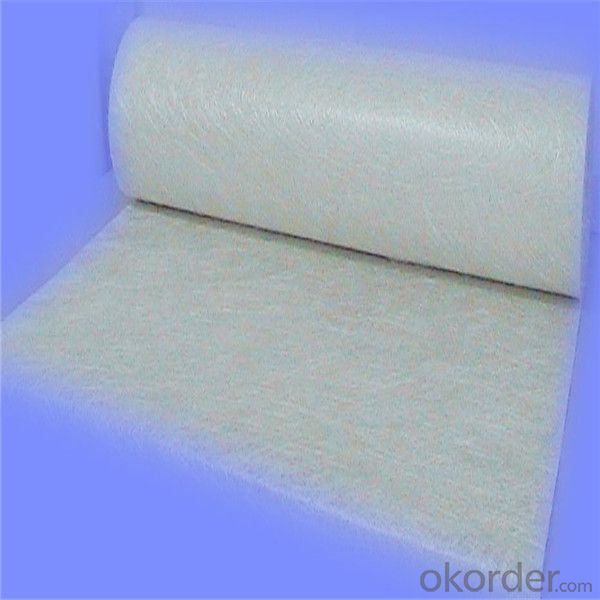
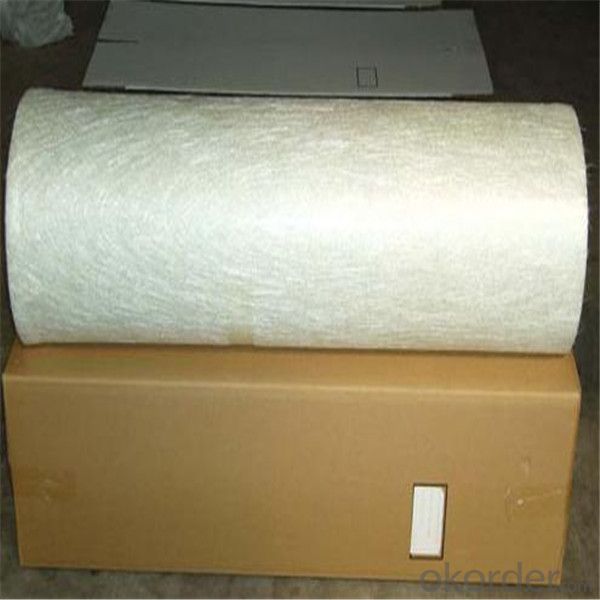
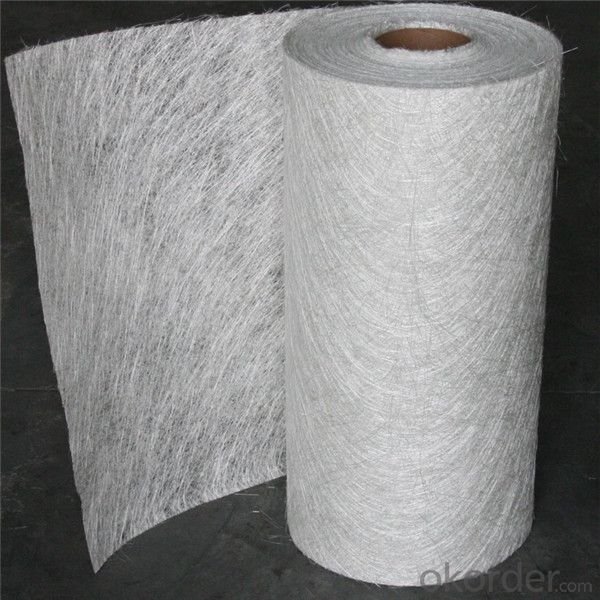
- Q: What are the thermal conductivity properties of fiberglass chopped strand?
- Fiberglass chopped strand has relatively low thermal conductivity properties. This is due to the composition and structure of the material. Fiberglass is made up of thin, tightly packed strands of glass fibers. These fibers act as barriers to the flow of heat, making fiberglass an effective insulator. The chopped strands, which are shorter lengths of fiberglass fibers, still retain these insulating properties. As a result, fiberglass chopped strand can help to reduce heat transfer, making it useful in applications such as insulation, thermal barriers, and heat shields. However, it is important to note that the thermal conductivity of fiberglass chopped strand can vary depending on factors such as density, thickness, and manufacturing process.
- Q: Can fiberglass chopped strand be used for reinforcing metal matrix composites?
- Yes, fiberglass chopped strand can be used as a reinforcing material in metal matrix composites. The strong and lightweight nature of fiberglass makes it suitable for enhancing the mechanical properties of metal matrices, providing increased strength, stiffness, and resistance to wear and corrosion.
- Q: How is fiberglass chopped strand used in the medical industry?
- Due to its exceptional mechanical properties and biocompatibility, fiberglass chopped strand is extensively utilized in the medical field. It finds applications in a range of medical products, including orthopedic implants, prosthetics, dental materials, and wound dressings. In the realm of orthopedic implants, fiberglass chopped strand is employed in the production of bone fixation devices like screws, plates, and rods. Its remarkable strength and stiffness make it an ideal choice for providing structural support and stability to fractured bones during the healing process. Furthermore, its biocompatibility ensures that it does not cause any adverse reactions or complications within the patient's body. Prosthetics, such as artificial limbs or joints, also benefit from the incorporation of fiberglass chopped strand. By integrating this material into the manufacturing process of prosthetic devices, manufacturers are able to achieve lightweight yet sturdy structures that closely resemble natural body parts in terms of functionality and appearance. The durability and resistance to wear and tear of fiberglass chopped strand make it suitable for prolonged usage. Dental materials, including dentures, bridges, and crowns, also enjoy the advantages of fiberglass chopped strand. This material can be utilized to reinforce dental composites, thereby increasing their strength and preventing fractures or breakages. Moreover, its biocompatibility ensures that patients do not experience any adverse reactions or allergies. Another significant application of fiberglass chopped strand in the medical industry lies in wound dressings. It can be incorporated into dressings to create a protective barrier over wounds. Its high absorbency assists in managing excessive exudate, while its strength and flexibility guarantee that the dressing conforms to the wound's contour, promoting faster healing. In summary, fiberglass chopped strand plays a vital role in the medical field by offering structural support, enhancing durability, and promoting biocompatibility in a variety of medical applications. Its versatile properties make it a favored choice for both manufacturers and healthcare professionals, contributing to advancements in patient care and treatment outcomes.
- Q: How is the quality of fiberglass chopped strand ensured during production?
- The production process of fiberglass chopped strand incorporates various measures to guarantee its quality. To begin with, strict testing is carried out on the raw materials, including glass fibers, resin, and additives, to ensure they meet the necessary specifications and standards. Throughout the manufacturing process, regular calibration and maintenance of the production equipment are conducted to ensure accurate and consistent outcomes. Close monitoring and control of parameters such as temperature, pressure, and speed are employed to achieve the desired quality of chopped strand. Quality control checks are performed at different stages of production. These checks involve visually inspecting the finished product to identify any defects or inconsistencies. Additionally, samples are taken from each batch and subjected to a range of tests, including tensile strength, fiber diameter, moisture content, and impurity levels. These tests serve to verify the physical and chemical properties of the chopped strand and ensure it meets the required standards. In addition, production facilities often implement quality management systems, such as ISO 9001, to ensure adherence to established protocols and procedures. These systems aid in maintaining consistency, traceability, and continuous improvement in the production process. In conclusion, the quality of fiberglass chopped strand is guaranteed through rigorous testing of raw materials, meticulous control of the production process, thorough quality checks, and adherence to quality management systems. These measures ensure the production of a reliable and consistent product that meets the desired specifications and standards.
- Q: How does the abrasion resistance of the chopped strand affect its performance?
- The abrasion resistance of the chopped strand plays a crucial role in determining its overall performance. Abrasion resistance refers to the ability of the material to withstand wear and tear caused by rubbing, scraping, or friction. In the case of chopped strand, which is commonly used in composite materials, the abrasion resistance directly impacts its durability and longevity. A higher level of abrasion resistance means that the chopped strand will be more resistant to damage caused by abrasive forces, such as constant rubbing or impact against a rough surface. When the chopped strand has good abrasion resistance, it can withstand heavy usage and harsh environmental conditions without deteriorating quickly. This is particularly important in applications where the material is exposed to constant abrasion, such as automotive parts, marine vessels, or construction materials. A chopped strand with low abrasion resistance will be more prone to wear and tear, leading to premature failure of the composite material in which it is used. This can result in reduced performance, decreased product lifespan, and increased maintenance costs. Additionally, the abrasion resistance of chopped strand can also affect its mechanical properties. A material with high abrasion resistance tends to have better mechanical strength, stiffness, and impact resistance. This is because the ability to withstand abrasion indicates a higher level of structural integrity and resistance to deformation. In summary, the abrasion resistance of chopped strand significantly impacts its performance. A higher level of abrasion resistance ensures durability, longevity, and overall better mechanical properties. Therefore, when selecting chopped strand for a specific application, it is crucial to consider its abrasion resistance in order to ensure optimal performance and longevity of the composite material.
- Q: Can fiberglass chopped strand be used in composite manufacturing processes?
- Yes, fiberglass chopped strand can be used in composite manufacturing processes. Chopped strand is a form of fiberglass that has been cut into short lengths, typically 1-3 inches. It is commonly used as a reinforcing material in composite manufacturing, where it is mixed with a resin matrix to create a strong and lightweight composite material. The chopped strand is typically spread evenly throughout the resin matrix, either by hand or by using specialized equipment. The resin matrix then cures, creating a solid and durable composite material. The fibers in the chopped strand provide reinforcement to the composite, improving its mechanical properties such as strength and stiffness. Chopped strand is often used in processes such as hand lay-up, spray-up, and filament winding. It is a versatile material that can be used in a wide range of composite applications, including automotive parts, aerospace components, marine structures, and construction materials. In conclusion, fiberglass chopped strand is a commonly used material in composite manufacturing processes. It provides reinforcement to composite materials, improving their mechanical properties and making them suitable for various applications.
- Q: How does the handling method of fiberglass chopped strand affect its performance?
- The handling method of fiberglass chopped strand can significantly affect its performance. The handling method refers to how the chopped strands are processed, packaged, and stored before use. Improper handling can lead to several issues. Firstly, it can result in strands being damaged or broken, which can negatively impact the strength and integrity of the final fiberglass product. Damaged strands may not fully bond with the resin matrix, leading to weaker mechanical properties such as tensile strength and impact resistance. Secondly, inadequate handling can cause the chopped strands to become contaminated with foreign particles or moisture. Contaminants can interfere with the resin impregnation process and reduce the bonding capability of the fiberglass. Moisture, on the other hand, can cause microcracks within the strands, leading to reduced overall strength and dimensional stability. Furthermore, the handling method also affects the dispersion of the chopped strands within the resin matrix. Properly handled strands will have a more uniform distribution, leading to improved load transfer and enhanced mechanical properties. In contrast, poorly handled strands may clump together, resulting in uneven reinforcement and potential weak spots in the final product. To ensure optimal performance, it is crucial to follow recommended handling practices for fiberglass chopped strand. This includes storing the strands in a clean and dry environment, protecting them from exposure to moisture or other contaminants. Additionally, careful transportation, packaging, and processing techniques should be employed to prevent any damage to the strands. By adhering to proper handling methods, manufacturers can maximize the performance of fiberglass chopped strand and ensure the production of high-quality fiberglass products with superior mechanical properties and reliability.
- Q: How does the fiber length of fiberglass chopped strand affect its performance?
- The performance of fiberglass chopped strand is greatly influenced by the length of its fibers. Longer fibers offer numerous advantages compared to shorter ones. To begin with, longer fibers enhance the mechanical properties of the fiberglass composite. They provide increased strength and stiffness, making the composite material more resistant to deformation and capable of withstanding higher loads. Consequently, the final product becomes stronger and more durable. Furthermore, longer fibers enhance the bonding between the fiber and the matrix material. Their larger contact area with the matrix allows for better stress transfer, resulting in improved overall performance. This enhanced bonding helps the composite resist crack propagation and delamination. In addition, longer fibers can enhance the impact resistance of the fiberglass composite. Acting as reinforcements, they absorb and distribute the energy generated during impacts. This prevents cracks from spreading and improves the material's ability to withstand sudden forces. Nevertheless, it is crucial to consider that specific applications may require an optimal fiber length. Longer fibers may not always be advantageous, as they can increase resin viscosity and make processing more challenging. Additionally, longer fibers may be less effective in applications that demand good flowability or require the composite to conform to complex shapes. In conclusion, the fiber length of fiberglass chopped strand significantly affects its performance. Longer fibers contribute to improved mechanical properties, enhanced bonding, and increased impact resistance. However, determining the optimal fiber length should be done carefully, taking into account the specific requirements of the application to balance performance and processability.
- Q: Can fiberglass chopped strand be used in the production of automotive body parts?
- Yes, fiberglass chopped strand can be used in the production of automotive body parts. It is commonly used as a reinforcing material in composite materials, providing strength, rigidity, and impact resistance to the final product.
- Q: How does the fiber orientation distribution of fiberglass chopped strand affect the properties of composites?
- The properties of composites are greatly influenced by the distribution of fiber orientation in fiberglass chopped strand. This distribution refers to how the fibers are aligned and arranged within the composite material. Firstly, the mechanical properties of the composite are affected by the fiber orientation distribution. Typically, fiberglass chopped strands are randomly oriented within the matrix, creating a three-dimensional network. This random distribution results in isotropic properties, meaning the composite exhibits similar mechanical behavior in all directions. However, if the fibers are aligned in a specific direction, such as unidirectional alignment, the composite becomes anisotropic, meaning it has different mechanical properties in different directions. For example, composites with aligned fibers have improved stiffness and strength along the fiber direction, but reduced properties in other directions. Secondly, the thermal properties of composites are influenced by the fiber orientation distribution. When the fibers are randomly distributed, heat is transferred in multiple directions, leading to isotropic thermal conductivity. Conversely, if the fibers are aligned, heat transfer is more efficient along the fiber axis, resulting in anisotropic thermal conductivity. This anisotropic behavior is advantageous when designing composites for specific applications that require controlled heat dissipation or insulation properties. Thirdly, the fiber orientation distribution affects the electrical properties of composites. Randomly distributed fibers create a conductive network throughout the material, enabling good electrical conductivity in all directions. However, if the fibers are aligned, the electrical conductivity becomes anisotropic, with higher conductivity along the fiber direction. This anisotropic behavior can be advantageous in applications where electrical conductivity needs to be controlled, such as in electronic devices or electromagnetic shielding. Furthermore, the fiber orientation distribution impacts the overall durability and fatigue resistance of composites. Randomly distributed fibers help distribute stress and strain more evenly throughout the material, enhancing its resistance to crack propagation and fatigue failure. In contrast, composites with aligned fibers may experience stress concentrations along the fiber direction, making them more vulnerable to failure under cyclic loading. In conclusion, the fiber orientation distribution of fiberglass chopped strand has a significant impact on the properties of composites. It determines the mechanical, thermal, electrical, and durability characteristics of the material, allowing for tailored composite designs to meet specific application requirements.
Send your message to us
Fiberglass Chopped Strand Mat Machine for 2024 1040mm Chopped Strand Mat
- Loading Port:
- Tianjin
- Payment Terms:
- TT OR LC
- Min Order Qty:
- 100 m.t.
- Supply Capability:
- 20000 m.t./month
OKorder Service Pledge
Quality Product, Order Online Tracking, Timely Delivery
OKorder Financial Service
Credit Rating, Credit Services, Credit Purchasing
Similar products
Hot products
Hot Searches
Related keywords
